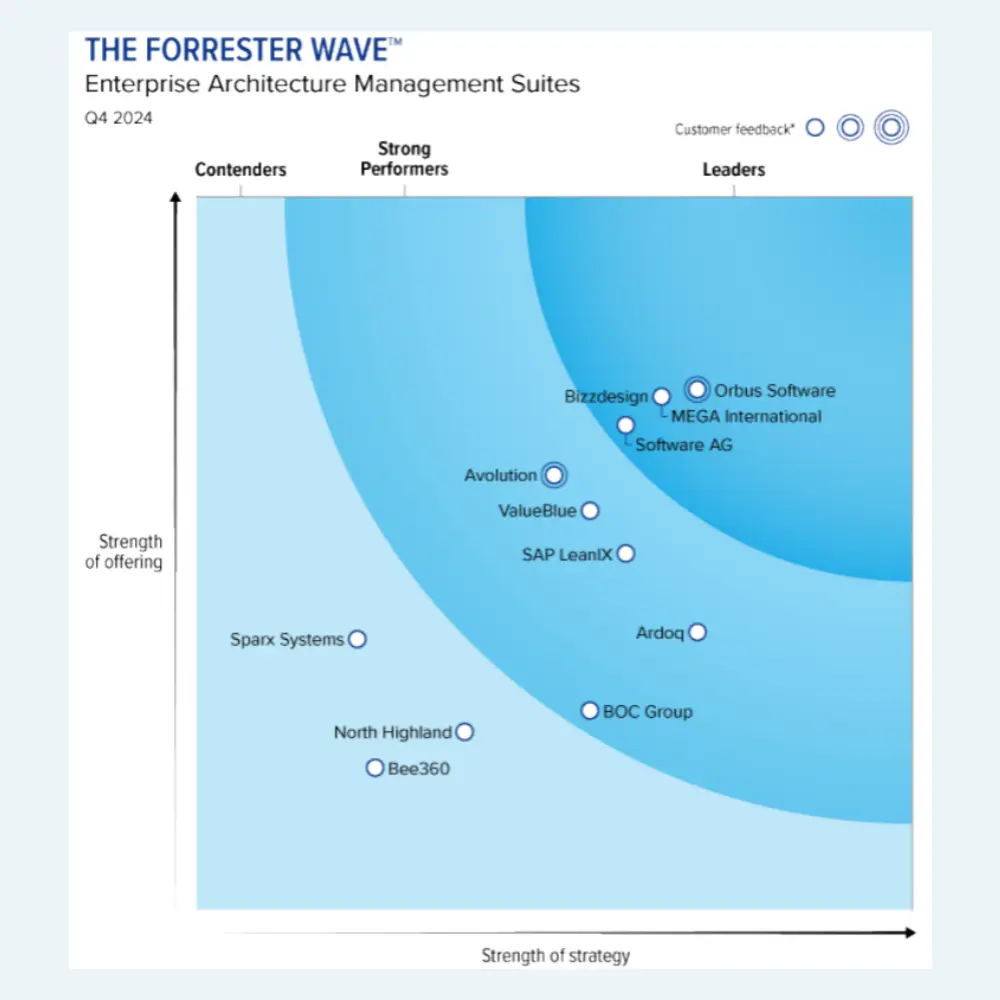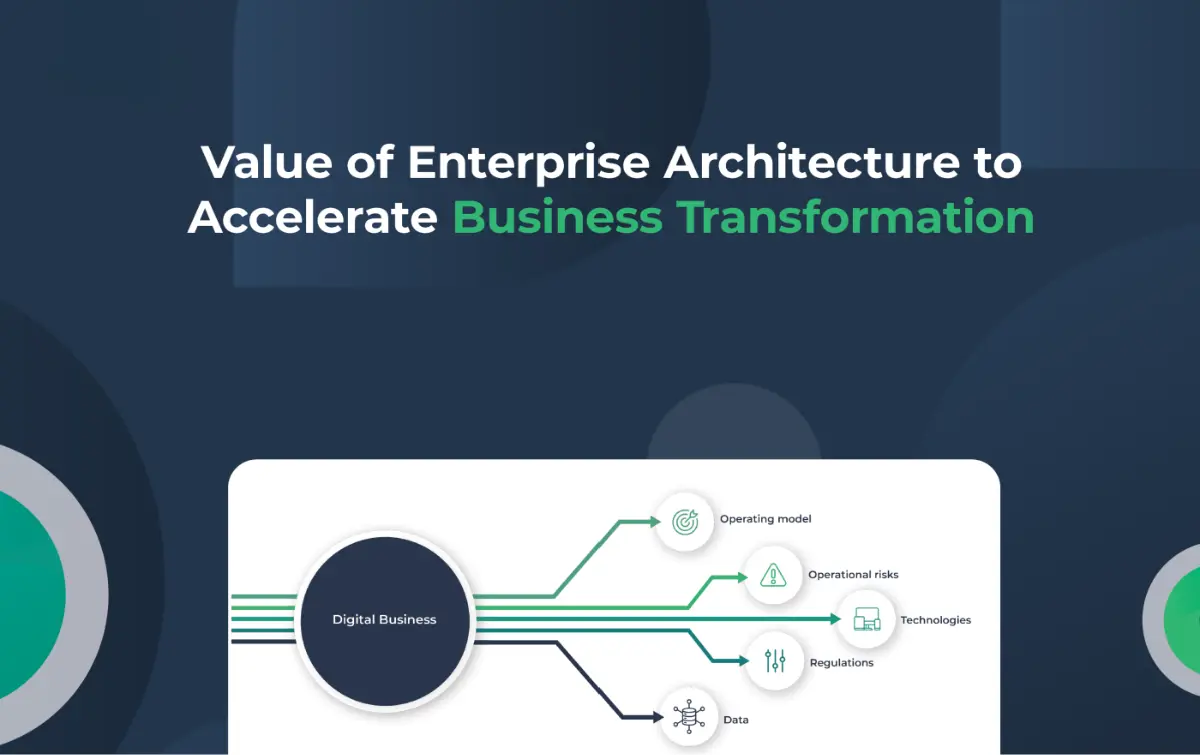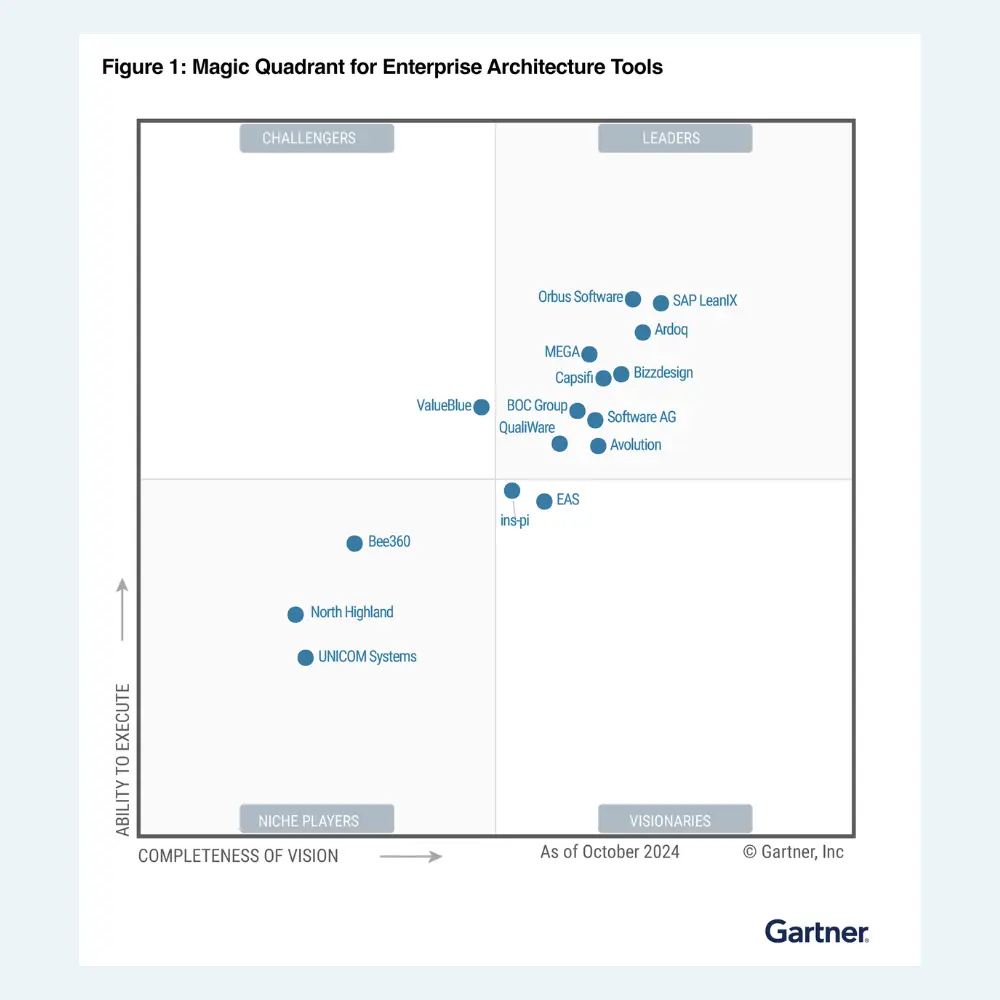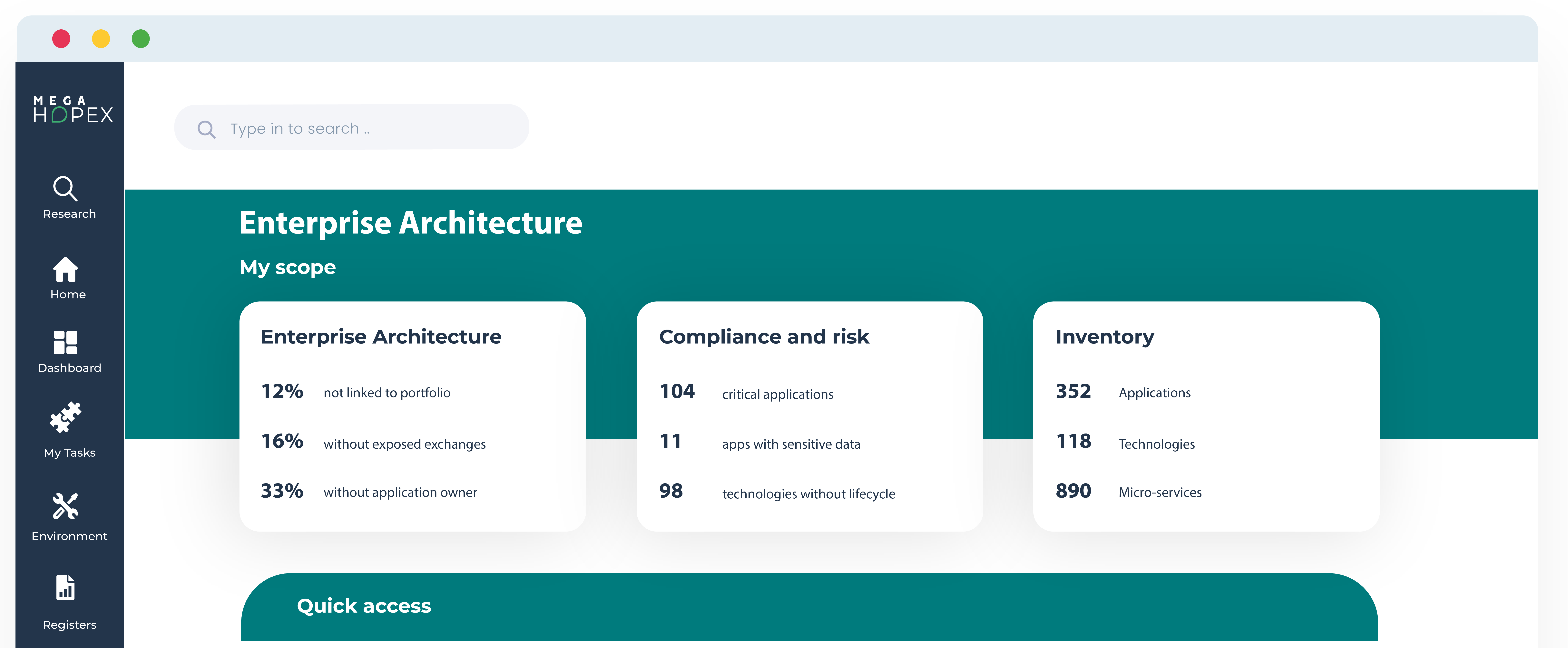
Enterprise Architecture as Strategy: Building the Foundation for Success
Enterprise Architecture plays a crucial role in the strategic planning and execution of businesses. It involves designing and organizing the overall structure of an enterprise to align with its goals and objectives. By formulating a rock-solid strategy and implementing it through your enterprise architecture, you can construct a solid foundation for business execution.

Enterprise Architecture can be defined as the blueprint or framework that defines an organization's structure and operation. It encompasses various aspects such as people, processes, technology, and information, forming a cohesive system that enables organizations to achieve their strategic objectives.
Role of Enterprise Architecture in Business
Enterprise Architecture is vital in aligning the IT infrastructure and digitized business processes with the business strategy. It improves strategy execution by providing a clear roadmap for how technology and resources should be utilized to achieve business goals. By defining your operating framework through enterprise architecture, you can ensure that all aspects of your organization work harmoniously towards a common objective.
Implementing Enterprise Architecture Strategy
Implementing Enterprise Architecture brings numerous benefits to organizations. First, it provides a solid foundation for business execution—an IT infrastructure well-aligned with strategic goals and optimized for efficiency. Second, it enables organizations to identify and leverage core capabilities for profitability. Third, it facilitates agility and adaptability, allowing businesses to respond to changing market dynamics and take advantage of emerging opportunities.
READ: Key Benefits of Enterprise Architecture
Components of Enterprise Architecture
Business Architecture
Business architecture aligns an organization's business activities with its strategic goals.
Information Architecture
Information architecture ensures data is managed efficiently and supports the organization's objectives.
Application Architecture
Application architecture defines how software applications interact and support business functions.
Technology Architecture
Technology architecture outlines the hardware and software infrastructure necessary for operations.
Creating a Foundation for Business Execution
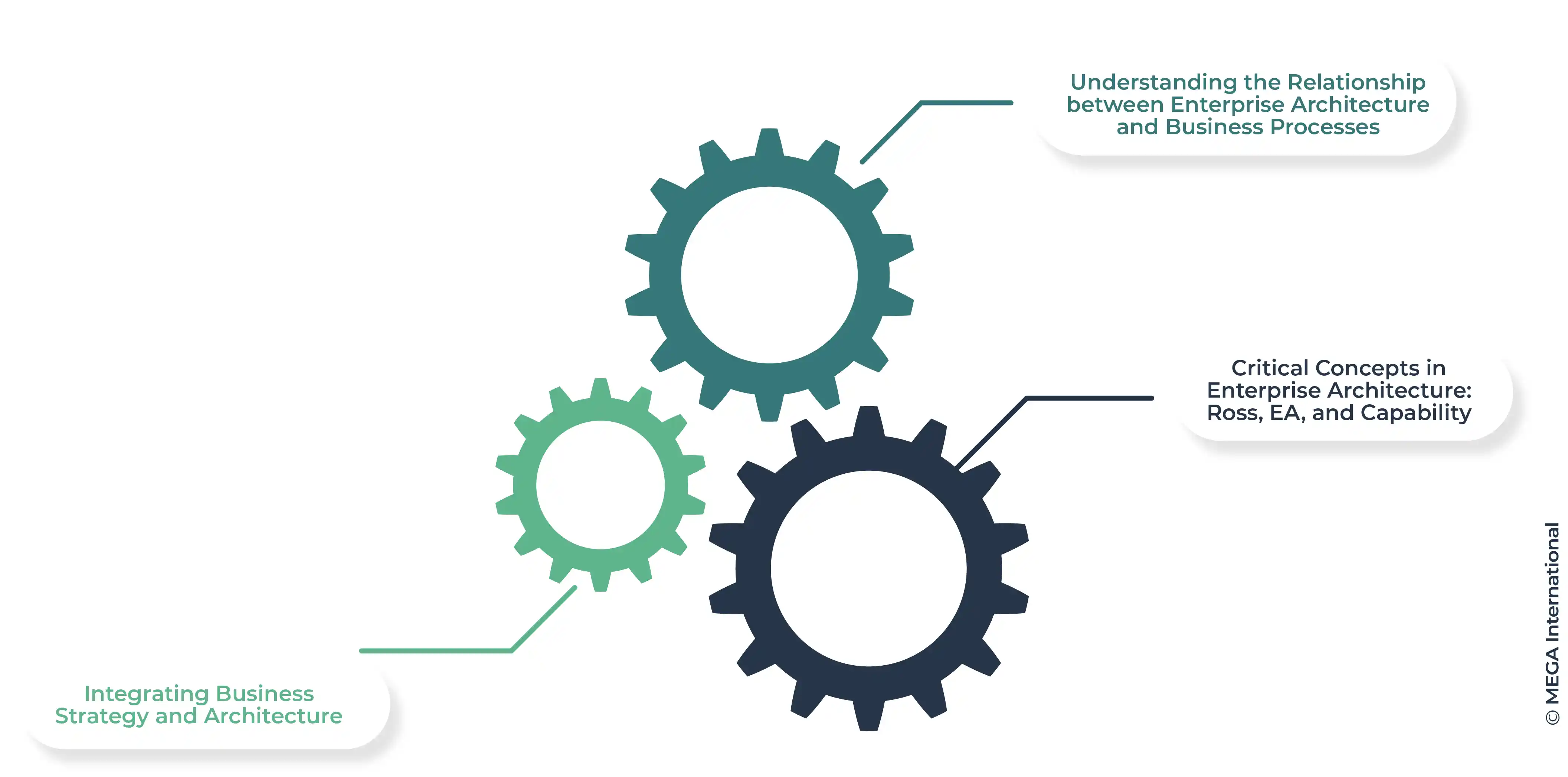
Understanding the Relationship between Enterprise Architecture and Business Processes
Enterprise Architecture and business processes go hand in hand. Enterprise Architecture provides a framework for understanding and optimizing business processes. It helps organizations analyze their current processes, identify areas for improvement, and align them with the strategic objectives. Organizations can streamline operations, enhance efficiency, and drive better business outcomes by integrating enterprise architecture with business processes.
Integrating Business Strategy and Architecture
Business strategy refers to the overall direction and scope of an organization over the long term. In contrast, architecture refers to the structure and design of an organization's systems, processes, and technology. By integrating these two aspects, organizations can ensure that their architecture supports their business strategy, enabling them to achieve their strategic objectives effectively.
One key benefit of integrating business strategy and architecture is the alignment of the organization's capabilities with its strategic goals.
This alignment helps organizations prioritize their resources and investments based on their strategic objectives. It allows them to identify the gaps between their current capabilities and desired future state and develop a roadmap to bridge them. By doing so, organizations can ensure that their architecture is designed to support their strategic goals and can make informed decisions about which initiatives to pursue and which to avoid.
Another benefit of integrating business strategy and architecture is adapting to changing market conditions and customer needs.
Organizations must be agile and responsive to stay competitive in today's rapidly evolving business landscape. By aligning their architecture with their business strategy, organizations can more effectively respond to changing market dynamics by quickly and efficiently adjusting their processes, systems, and technology. This adaptability allows organizations to seize new opportunities and mitigate potential risks, ultimately driving business growth and success.
How to Define and Execute Enterprise Architecture
Defining and executing Enterprise Architecture requires a systematic approach. It involves understanding the organization's current state, representing the future, and formulating a roadmap for achieving the desired outcomes.
Get a complimentary copy: 2024 Gartner® Magic Quadrant™ for Enterprise Architecture Tools
It requires collaboration among stakeholders, including business leaders, IT professionals, and subject matter experts. By following industry best practices and leveraging proven methodologies, organizations can establish a solid foundation for their enterprise architecture and ensure its successful execution.
The Integral Role of Enterprise Architecture in Digital Transformation
Enterprise Architecture provides valuable insights for organizations embarking on digital transformation journeys.
It offers a holistic view of the organization's current IT landscape, identifies gaps and redundancies, and determines where digital interventions can create maximum impact. By leveraging enterprise architecture, organizations can make informed decisions and develop a roadmap that aligns their digital transformation efforts with the overall business strategy.
Building a Digital Transformation Vision with Enterprise Architecture
Enterprise Architecture is crucial in building a compelling vision for digital transformation. It helps organizations envision the desired future state, define the required technological capabilities, and identify the necessary changes in processes and people. Digital transformation initiatives with the enterprise architecture, organizations can ensure the successful implementation and adoption of new technologies, optimizing the benefits of digital transformation.
Case Studies: Successful Digital Transformations Enabled by Enterprise Architecture
Many organizations have achieved remarkable success in their digital transformation journeys by leveraging enterprise architecture. Companies like Amazon, Netflix, and Uber have transformed their industries by fundamentally changing how they operate and deliver value to customers. These companies have recognized the importance of enterprise architecture in driving their digital initiatives, resulting in substantial growth and market dominance.
READ: How EA Drives Successful Digital Transformations in Organizations
Getting Ahead with Enterprise Architecture Strategy
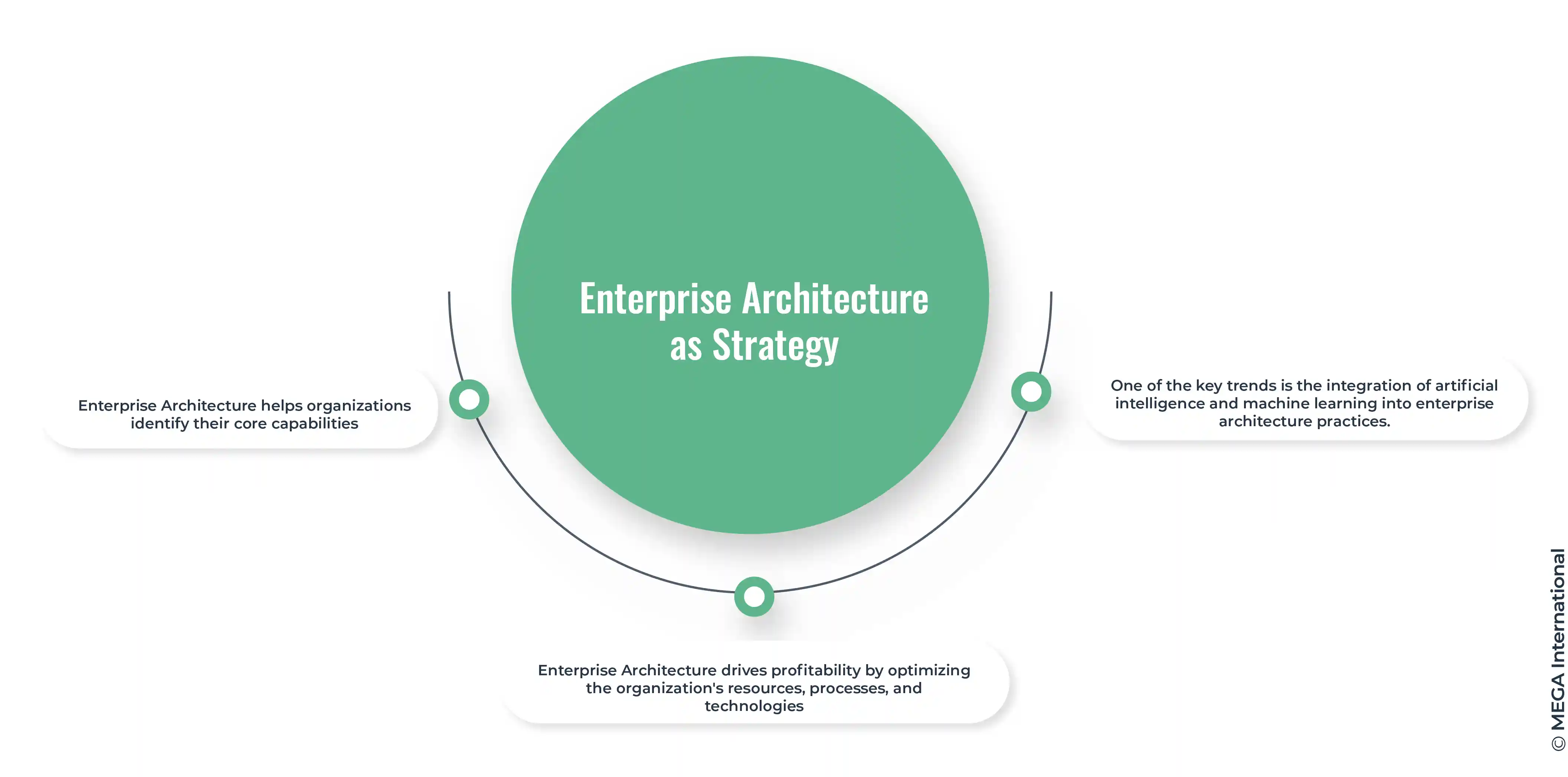
Using Enterprise Architecture to Identify Core Capabilities
Enterprise Architecture helps organizations identify their core capabilities - the unique strengths that differentiate them from competitors. Organizations can focus their resources and investments on areas that provide maximum value by understanding these capabilities. By leveraging enterprise architecture, organizations can align their core capabilities with the overall business strategy, enabling them to advance in the competitive landscape.
Leveraging Enterprise Architecture for Profitability
Enterprise Architecture drives profitability by optimizing the organization's resources, processes, and technologies. It helps identify areas of improvement, reduce redundancies, and streamline operations, ultimately leading to cost savings and improved profitability. By continuously monitoring and evaluating the enterprise architecture, organizations can stay agile, make informed decisions, and ensure long-term financial success.
Future Trends in Enterprise Architecture
Enterprise Architecture is an evolving discipline, and several trends are shaping its future. One key trend is the integration of artificial intelligence and machine learning into enterprise architecture practices. These technologies can help organizations automate complex data analysis, enhance decision-making processes, and enable more proactive and predictive architecture development. Additionally, the increasing focus on agility, cloud computing, and digital transformation is also influencing the future direction of enterprise architecture.
Discover the Enterprise Architecture Strategy Trends in 2024
Enabling Agile Transformation through Enterprise Architecture
Agile transformation has become a key initiative for many organizations as they strive to adapt and thrive in an ever-changing business landscape. However, implementing and scaling agile practices across the enterprise can be complex and challenging. This is where enterprise architecture (EA) can be critical in enabling and supporting agile transformation efforts.
A key aspect of agile transformation is the ability to rapidly respond to changing customer needs and market demands. Enterprise architecture helps achieve this agility by enabling organizations to design and implement flexible and scalable architecture patterns. By adopting a modular and component-based approach, EA empowers the development of loosely coupled systems that can be easily adapted and extended.
READ: Enterprise Architecture Definition
Another critical role of enterprise architecture in agile transformation is fostering collaboration and communication across different business units and teams. EA facilitates effective communication and stakeholder alignment using standardized architectural frameworks and models. This helps create a shared understanding of the agile transformation goals and ensures all parties work towards a common purpose.
Digital Transformation and Enterprise Architecture
Digital transformation uses digital technologies to create new business models, processes, and customer experiences to drive growth, streamline operations, and improve efficiency. It involves the integration of digital technologies into all aspects of an organization, fundamentally changing how a company operates and delivers value to its customers.
On the other hand, enterprise architecture creates and organizes an organization's information technology assets to align with its business objectives. It provides a holistic view of the organization, enabling better decision-making and strategic planning. Digital transformation and enterprise architecture go hand in hand, as enterprise architecture is crucial in enabling successful digital transformation initiatives.
Enterprise architecture as a strategy is not merely an option for organizations; it's a prerequisite for long-term success in today's dynamic business world. Companies can chart a course toward sustainable growth and competitiveness by embracing EA and aligning it with their business objectives.
FAQs
Enterprise Architecture as Strategy is a design framework that enables organizations to align their business and IT strategies. It provides a solid foundation for business execution by defining the vision and solution architecture design.
The Enterprise Architecture as Strategy authors are Jeanne W. Robertson and David C. Robertson.
Enterprise Architecture as Strategy helps organizations by providing a framework to digitize business processes, automate core capabilities, and create an IT infrastructure that supports their business goals.
Solution architecture design plays a crucial role in Enterprise Architecture as Strategy as it helps organizations identify and design the solutions that will enable them to achieve their business objectives.
Enterprise Architecture as a Strategy can help your company automate its processes by providing insights into how to digitize your business processes and automate core capabilities.
Yes, Enterprise Architecture as Strategy provides a framework for making tough decisions by providing a clear vision of how your firm will survive and thrive in the ever-changing business environment.
Enterprise Architecture as Strategy enables business execution by providing an IT infrastructure and digitized business processes to automate your company's core capabilities.
The main concepts discussed in Enterprise Architecture as Strategy include the importance of enterprise architecture as a strategic tool to align business and IT, to design operating models and achieve business goals..
Challenges in implementing EA include resistance to change, resource constraints, and the need for cultural transformation within the organization.
Sure! Some notable examples include Microsoft, Ford, and the U.S. Department of Defense, which have all used EA to streamline operations and achieve their business goals.
The value of Enterprise Architecture to accelerate business transformation
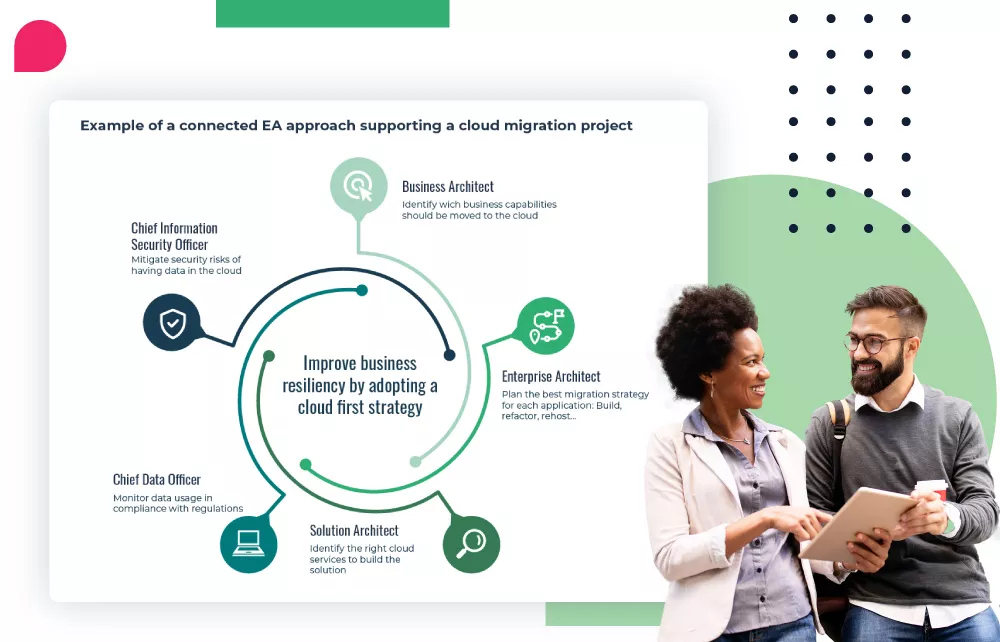
Access this white paper to learn:
- The evolution of the enterprise architecture practice
- How to Deliver Value through a Connected Enterprise Architecture Practice
- Strategies for Adopting a Business-Outcome-Driven Approach
- How to Use Data-Driven Tools to Enhance Your Enterprise Architecture Connectivity
Enterprise Architecture Related Content
Shift from a documentation tool to an operational tool and accelerate business transformation
MEGA HOPEX for Enterprise Architecture
Request a demonstration of HOPEX for EA, and see how you can have immediate value of your projects.






